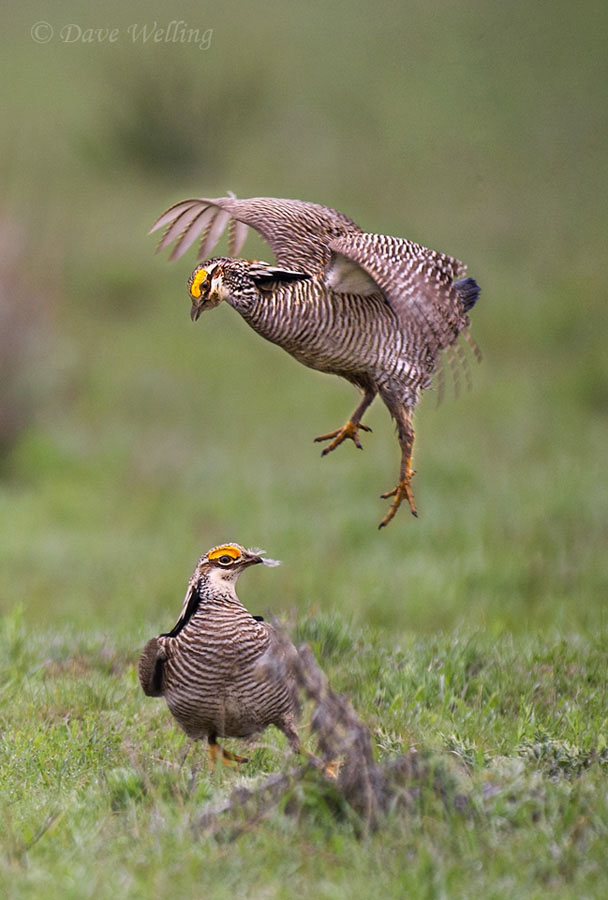Wildlife action photography is a difficult skill that takes practice to master. You have to develop your photographic reaction skills, your understanding of your wildlife subject and your concepts of action image. If you don’t have access to wild animals for practice, be creative! Find a local sports team and photograph practices or games. These are high action environments with different subjects but the concepts are the same.
Look at these prairie chickens. It’s almost like a forward going to the basket for a dunk, jumping over the one guarding him. You can get opportunity after opportunity in a basketball game to capture images like this. Use these opportunities to learn your camera and develop your technique.

How does high speed continuous shooting work on your camera? How does your autofocus work? How fast a shutter speed do you need to capture the action? Do you want stop action or artistic blurring? How fast can you focus on the eye of the subject (the most important item for images like this). Can you quickly frame your subject without cutting off an arm or leg? Do you want the background in focus to show the surroundings or blurred to emphasize the subject. All these issues come into play whether it’s the basketball team or the prairie chickens.
The prairie chickens were in low light so I knew I needed a high ISO setting for a fast shutter speed. I was some distance from the prairie chickens and I wanted the background blurred out and soft to emphasize the birds so I used an aperture of F4. That gave me a shutter speed of 1/800 of a second. These birds are fairly large and not terribly fast so that shutter speed worked quite well.
I also watched these two birds for several minutes getting a feel for how they react to each other. They would crouch and posture, then one would blast into the air trying to dominate the other. This behavior led me to a vertical composition that was not too tightly cropped. You cannot forecast how high the bird might jump so you need a little wiggle room. I also pre-focused on the area and turned my autofocus off and my high speed continuous shutter release on. Shutting off the autofocus eliminated the lag time (ever so slight) in the lens finding the focus point and then the lens searching again as the bird jumped. With autofocus on, you might only get one shot during the whole action sequence instead of 5-10 images with high speed continuous. You don’t always get sharp focused images but, with practice, you can improve your chances for winners. Do the same thing at your basketball game. Pre-focus on the basket area and use your high speed continuous shutter setting. Press the shutter to start shooting as the player approaches the basket, not when he is already there. Let the camera record the complete sequence and then pick out the “good ones”. Keep practicing using different settings and learn from your results.
A note on high speed continuous shooting: You can go through a lot of memory in this mode so make sure you have a large memory card in your camera and it has no files on it - start with a clean card. You won’t find yourself out of memory in the middle of the action.
About the author: Dave Welling is a full time professional photographer specializing in wildlife, landscape and nature with over 75,000 6x7, 6x4.5, and 35mm film and digital images. He has been capturing evocative images of the natural world for over 25 years, producing the highest quality images for publication. His images often capture unique behavioral characteristics of wildlife or special lighting or weather conditions of landscapes. You can see more of his work at www.strikingnatureimagesbydavewelling.com.
Have something to add to the story? Leave a comment or email editor@outdoorphotographyguide.com.

If you have initiated back button focus, your focus is locked. Therefore, you wouldn’t need to turn off auto focus.